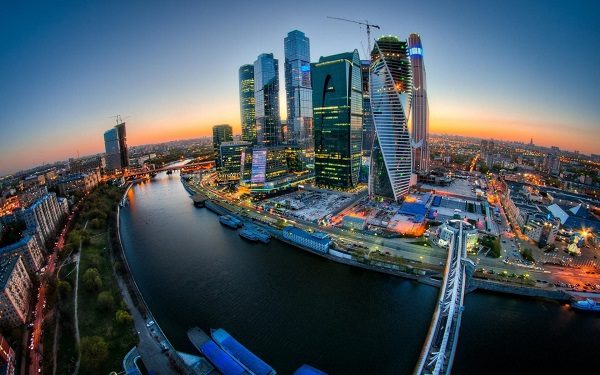Russia's radical concept of low debt coupled with a currency that is backed by fungible resource wealth has not gone unnoticed by investors.
Since the 2008 financial crisis (sparked by bundled and extremely toxic U.S. debt — thanks again for that), Moscow has struggled with capital flight.
As part of its response to western sanctions, Russia even offered "full amnesty" for undeclared capital that was repatriated to Russia. But it looks as if a conservative, stable monetary policy, more than anything else, has encouraged capital inflows.
For the first time since 2015, capital flight has reversed with positive inflows of $2.4 billion.
The reverse in capital flows is attributed to new money arriving in Russia "thanks to a boom in bond and equity investment that got underway" last year, as well as low to negligible debt obligations. Capital flows are expected to remain positive as "neither the state nor the corporates have much debt to repay".
We asked Russia Insider's in-house financial expert, Paul Goncharoff, who has been doing business in Russia since the time of the czars, about this positive development:
Funds have understandably been flowing into Russia at a high rate. How many stable and secure places can Dollars, Euros, or Rubles earn positive rates of return? No negative interest rates or zero interest rates in Russia, and the Russian Central Bank pursues a common sense conservative policy.In this context, there's plenty of reasons to believe that capital inflows will continue into the far future.
Dollars and euros are cheap in the 'west' especially for banks and funds. Those cheap currencies are put to work in Russia earning higher rates of return. In other words one can "spin money", some call it the "carry trade".
Additionally, if one is looking for security, the ruble today is backed by real fungible resource wealth, ie; oil, gas, agriculture, water, minerals (including gold and silver). A conservative steady government and very little internal dissonance. In short, returns on funds and a welcome comparative predictability.
Oh yes, and one more thing to keep in mind: DEBT. Russia's debt to GDP is negligible when compared to USA and EU..... not a minor detail.
If a country's sovereign debt is greater than its annual GDP, and it is growing healthily and predictably with some plan that is generally supported, investors feel more secure and will commit funds. If the debt is greater than GDP and likely to balloon further with an uncertain economic game plan, little bipartisan support, or in an environment of radically changing geopolitical stresses, then the question arises...... what quality is that debt? Think of Greece, Italy, etc.... even the US to a degree, especially when the 'faith' in the dollar is being challenged at several levels.
For purely scientific purposes, let's examine what's happening in the world of American debt. And as Paul noted earlier this week:
On March 15, 2017 the United States faces its debt ceiling deadline. That is the day the debt ceiling holiday the previous US Administration cobbled together just before October 2015 election expires.Russia has once again shown how a commonsense conservative policy makes a lot of sense. But what's in store for the paper printers in Washington? We'll have to wait and see...
According to the law, the debt ceiling will freeze in at $20 trillion. The Treasury may have roughly $200 billion in cash on hand at that time while spending remains today at a rate of $75 billion a month.
It seems that by June 2017 the Americans will be out of cash. This will come clear to the markets on or just after March 15 when speculation will add fuel to the volatility which this massive debt-ceiling crisis will usher in.
Some may say, "so what"? We will just print more dollars (QE) and kick the can further down the road.
Not so simple anymore, we have used up a lot of mojo — and credibility.
America alone (let's not even consider the EU or Japan) is indebted at 106% of GDP. The new administration also wants to institute a number of programs such as increased defense spending, broad tax cuts for corporations and individuals, more money for border security enforcement, more for veterans and a long overdue trillion-dollar infrastructure program.
All this may indeed cause several bubbles to burst, even all at once.




Reader Comments
to our Newsletter